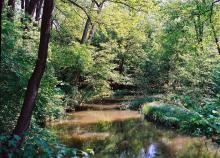 Asset Publisher
Asset Publisher
WORTH SEEING

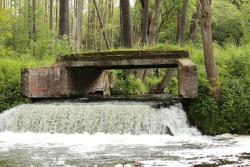
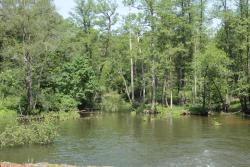
The most interesting monuments of material culture located within the territorial range of the Forest District Krosno.
Bielów– the village established in the Middle Ages. In the first half of the XIII century , Bielów became the part of large scale-landed property of Lubiąż Abbey. At the later period of time, it was the property of the demesne office in Krosno. In 1550, the village had 120 of inhabitants, and 1801, there were 170 people living in Bielów.
Within the area of the village, there are historical buildings (houses) from the beginning of the XX century.
On the way from Bielów to Łochowice, there is closed Protestant cemetery in relict state of preservation.
Budachów - for the first time mentioned in 1308 – the village was the property of Poznań Bishop those days. In 1565, it was the property of family von Baudach, then after 30 years war of family von der Groben, next family von Zastrow, in 1838 sold to the trade councillor Endell and finally, in 1865 came into hands of Huguenot Family Fournier.
About 1804, in the village there inhabited 400 people. Three also sustained historical church under the invocation of St. Joseph from the years 1782-1785 and Protestant church cemetery.
Czetowice– this place for the first time mentioned in 1308 - the village was the property of Poznań Bishop those days. In 1421 mentioned as the fief of family von Grunberg ( to the XVII century), next the property of family Gloger, then of baron von Kottowitz ( the end of XVIII century). From the year 1890, it was the part of family von Wedel goods. In 1801, in the village , there were 318 of people.
To the remaining historical buildings, there belong medieval parish branch church under the invocation of Sorrowful Mother, rebuilt during the time of reformation by the Protestants, having got cylindrical tower from XVII century and the altar in the shape of triptych, sculptured in stone. Remaining historical monuments: 4 houses from the beginning of the XX century and the former manor complex and Protestant cemetery.
Dobrosułów– for the first time mentioned in 1308 - the village was the property of Poznań Bishop those days. From 1503 came into hands of family von Loben, from the year 1724 – the property of family von Rothenburg. Then from 1800, it became the property of Dukes von Hohenzollern–Hechingen. In 1804 the village counted 596 of inhabitants .
Among the historical objects, there can be mentioned the church under the invocation of Christ the King from the year 1800, the former manor complex from the year 1900, as well as cemeteries : church and village ones, both from the half of the XIX century.
Gęstowice- for the first time mentioned in 1308 - the village was the property of Poznań Bishop those days. From the year 1437, it was the property of family Lossow, and from 1580 the property of family Schlieben. In 1644, it came into hands offamily von Troschke, and about the year 1890 – it became the property of family Fournier.
Among the historical objects, there can be mentioned theformer manor complex from the end of the XIX century, buildings and parish Protestant cemetery, within which, there are many remaining gravestones.
Krosno Odrzańskie - the beginnings of Krosno, as the tribe borough of Dziadoszanie (Dadosesani) and connected with it the settlement Beyond the borough, reach the VII century. Archaeological researches established the beginnings of the borough altogether with its spatial development, as the national fortress for the XI – XII centuries – times of the First Piast Dynasty. Regular plan of the town with the old town and the network of streets created in the XIII century, hasn't changed for centuries. Only in the second half of the XIX century, altogether with the formation of the industry and its expansion, buildings developed and moved towards the right bank of the Odra River.
 Asset Publisher
Asset Publisher
Retencja lekarstwem na suszę
Retencja lekarstwem na suszę
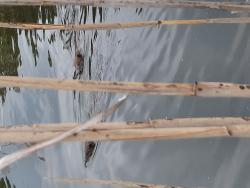
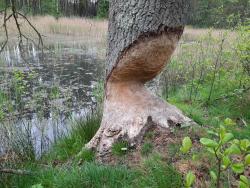


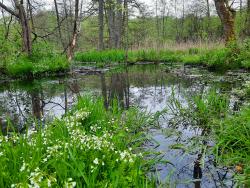

Retencja lekarstwem na suszę
W roku 2013 oraz 2015 na terenie Nadleśnictwa Krosno wybudowanych zostało 30 obiektów mających na celu gromadzenie wody na terenach leśnych. Inwestycja ta realizowana została pod nazwą: „Zwiększanie możliwości retencyjnych oraz przeciwdziałanie powodzi i suszy w ekosystemach leśnych na terenach nizinnych” wpisanego na listę projektów indywidualnych dla Programu Infrastruktura i Środowisko 2007-2013”. W pierwszym etapie inwestycji wybudowanych zostało 20 obiektów, a w drugim po przedłużeniu projektu kolejnych 10.
Wszystkie obiekty mają gromadzić 200 tys m3 wody. Od chwili zakończenia budowy nastąpił gwałtowny i pozytywny proces zmian środowiskowych w obrębie zbiorników retencyjnych. Zaczęły pojawiać się gatunki roślin rzadkich, które wcześniej nie występowały na tym terenie lub zanikły wiele lat temu takie jak wełnianka pochwowata, knieć błotna, czy bagno zwyczajne. Miejsca te przyciągają również gatunki zwierząt, które są nierozerwalnie związane z terenami wodno- błotnymi. Gatunkami takimi są żurawie, kaczki krzyżówki, czy bobry. Te ostatnie czują się nadzwyczaj dobrze w niektórych obiektach i swoją działalnością wyrządzają pewne szkody w drzewostanach sąsiednich. Należy jednak pamiętać, że ich obecność i działalność w znacznym stopniu przyczynia się do poprawy stosunków wodnych na naszych terenach.
Poprzez realizację tego projektu przez Nadleśnictwo Krosno odtworzono dawny sposób użytkowania terenu odbudowując zniszczone obiekty. Ustabilizowało warunki wodne w zasięgu oddziaływania prowadzonej inwestycji. Spowolniono odpływ powierzchniowy wód w zlewni rzeki Biała, Pliszka oraz Odra. Powstały płytkie rozlewiska, które stanowią habitaty rzadkich gatunków roślin i zwierząt. Częściowo odtworzono warunki wodne w starym korycie rzeki Pliszki. Wiele gatunków owadów, płazów, gadów, ptaków oraz ssaków zdobyło nowe miejsca rozwoju i rozrodu. Podniesiono witalność i produktywność siedlisk leśnych w rejonie wykonanej retencji.




